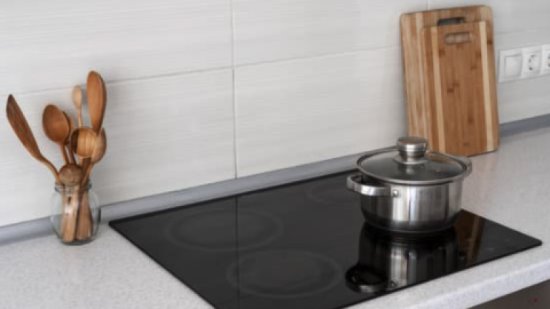
| ||||||
According to BayREN's website, "Induction uses electromagnetics to heat your pots and pans directly. Cooking times are quicker, and cooking food won't send wasted heat or pollutants into the air - for a safer, healthier home."
The webinar was titled "Now We're Cooking," and topics such as what affects indoor air quality in the kitchen; how indoor air contaminants affect health; and how to improve indoor air quality and reduce health impacts from cooking were discussed by Lawrence Berkeley National Laboratory's Indoor Air Quality Researcher Rengie Chan; San Francisco Bay Physicians for Social Responsibility's Board Member Dr. Marjaneh Moini; and Induction Cooking Expert Chef Rachelle Boucher.
Moini explained some of the health risks involved with gas cooking in the home. Three types of emissions can be especially harmful. NO2 (nitrogen dioxide) is a pollutant that can cause eye, nose and throat irritation when inhaled and can possibly decrease lung function by contributing to asthma, respiratory infections, and negative general cognitive functioning. CO (carbon monoxide) is harmful when breathed causing neurological effects and reduced overall cognitive functioning. PM2.5/PM0.1 (particulate matter) also causes neurological effects; aggravates asthma and reduces lung function; and contributes to heart attacks and premature death. While these involve large scale doses, over time constant subjection can be harmful, especially to children. Moini also discussed the effects of natural gas on the planet's health explaining that it is 90% methane, which is responsible for about half of global warming to date.
Chan spoke about the impact that cooking emissions have on indoor air quality. Cooking and burners emit air pollutants that can reach unhealthy levels in homes if not properly vented. Having properly functioning range hoods (capture efficiency) is a big step in keeping pollutants from mixing into the home's air. Berkeley Labs is in the process of conducting two new studies: Cooking Electrification and Ventilation Improvements for Children's Asthma (CEVICA), and California Residential Methane Emissions Characterization (CARMEC).
Boucher explained the basics of induction cooking by first mentioning how the unit looks similar to electric stove tops, with the difference being that induction makes a direct connection to the pot or pan. This allows the cook to have better control over how the food is prepared - it's speed and power. The unit gives even heating which allows it to heat up twice as fast. She stressed that any cookware used for induction cooking has to be magnetic. If a magnet sticks to the pan, you can use it. Additional advantages are that the kitchen stays cooler, because no heat is felt coming off the stove, and there is no open flame. Boucher admitted that it takes some getting used to when cooking with induction, but it won't take too long for cooks to get the hang of it. It's basically trial and error while learning the ropes of how to gauge the heat necessary for various foods.
BayREN Homes (BayREN.org) offers $750 in rebates when purchasing an induction unit, and Pacific Gas & Electric (pge.com/inductionloaner) offers its customers a free two-week lending program to test drive a 120V countertop induction unit.
Reach the reporter at:
